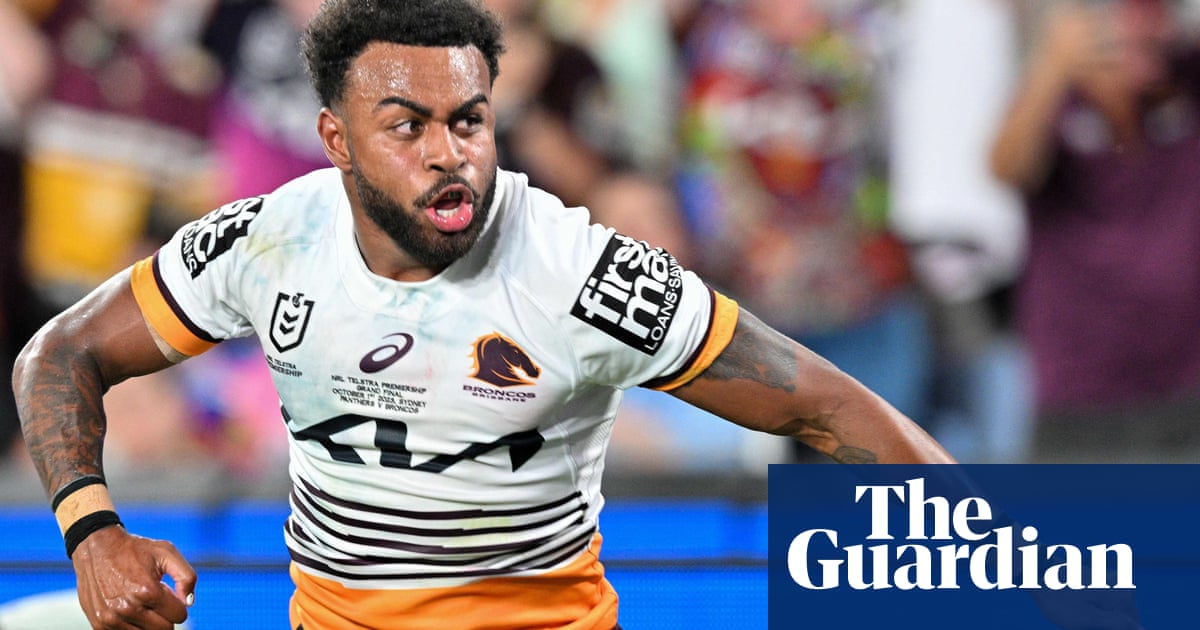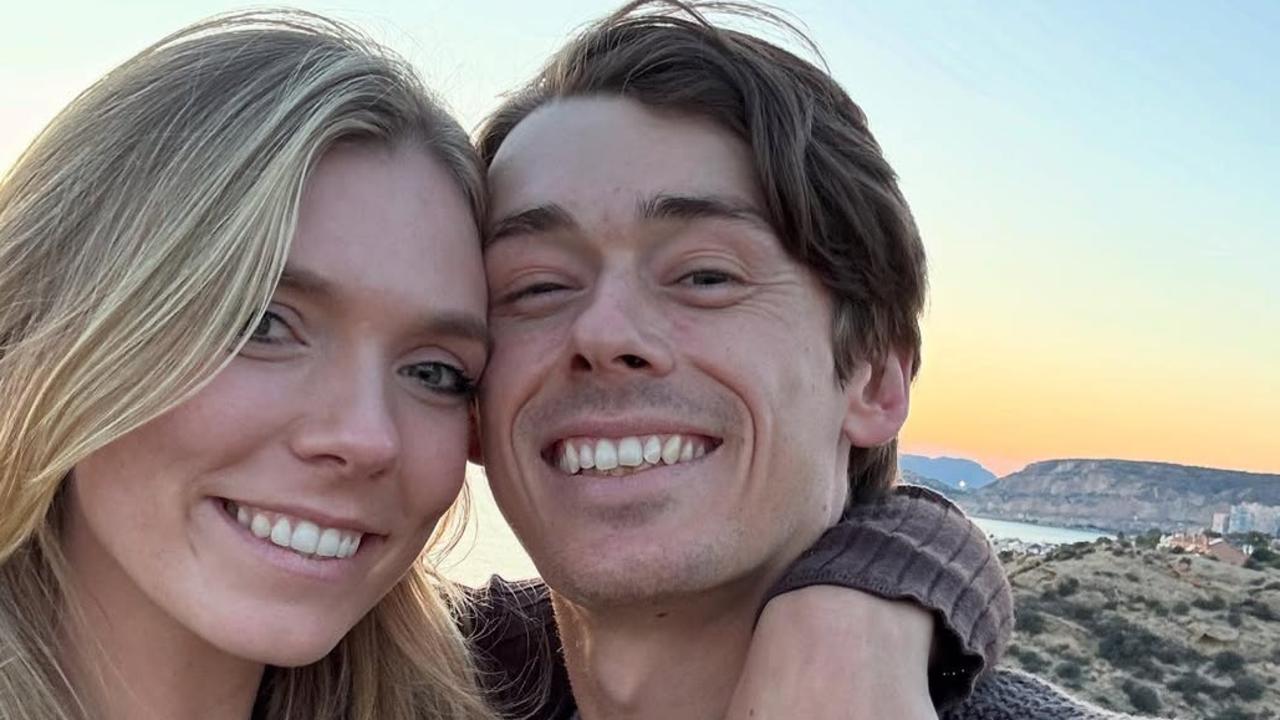After conquering 50-foot wave, Australian blind surfer seeks Paralympic inclusion | Kieran Pender

- by Admin
- August 14, 2024

For Australian blind surfing champion Matt Formston, one of the most distinctive memories from tackling the famous Nazaré break in Portugal came not on his surfboard but while sat on a jet ski. Towards the end of his time surfing a break that consistently hosts the largest wave in the world, Formston rode down the face on the back of a ski. It was only in that moment that he truly appreciated the violent energy of the water around him.
“It was the first time I’d gone down the wave not surfing it,” Formston says. “And I heard the explosion – I suppose that’s the only way to describe it – of the wave behind me. I realised I hadn’t heard that sound the whole time I’d been surfing.”
During Formston’s time at Nazaré late last year becoming the first blind surfer to conquer the feared break – including a 51-foot wave recently certified by the Guinness Book of World Records – he was intimately focused on the task at hand. So focused that only the sound of the whistle used to guide him permeated his consciousness.
“We used an orienteering whistle for me to surf the wave – my tow driver would blow the whistle for me to let go of the rope when he was 100% sure it was the right wave,” Formston says. “Then we realised that I was turning a bit late, because I was going so fast I wasn’t feeling the bottom of the wave, so he would blow the whistle a second time for me to do the bottom turn. And then he would blow the whistle a third time for me to kick out.”
Formston grew up surfing in Sydney’s northern beaches; being diagnosed with macular dystrophy at a young age could not keep him off the waves. His visual impairment is such that he now has no central vision and only a tiny amount of peripheral vision, but the 46-year-old has never shied away from a challenge. He is a multiple world and national blind surfing champion, and also represented Australia in para-cycling at the 2016 Paralympics. But Formston admits that surfing the biggest wave in the world was something else entirely.
“We believed it was doable,” he says. “Normally I’m very full of confidence in what I do – I’ve done the training, I’ve done the research. But laying in the water in Nazaré was probably the first time in years I questioned whether I was doing the right thing.”
The wave at Nazaré is unique, with swell that has travelled thousands of kilometres across the Atlantic being funnelled through a deep-water canyon until it suddenly meets the coast and explodes with remarkable ferocity. Since being pioneered by surfers in the early 2010s, Nazaré has become a favoured big wave location.
“The speed is unreal,” Formston says. “Everyone who surfs there says it’s the fastest they have ever been on a surfboard – you can’t compare it to any other wave in the world. It was like riding a rollercoaster on steroids.”
Formston’s journey tackling the biggest wave in the world is documented in a new film, The Blind Sea, which will be released this week. It is directed by Daniel Fenech and produced by Heath Davis, who had an unexpected breakout hit with Christmess last year.
“I’m very data-driven – no-one is going to come up to me afterwards, after seeing a movie about me, and tell me it’s shit,” Formston laughs. “But screenings so far are selling out, so that tells me people are putting their money and time into something, it’s going well. And more important some of the conversations that are coming out of it, people chasing a dream, that’s what makes it worthwhile for me.”
Formston says he hopes the film breaks down biases about people with disabilities, including visual impairment; the athlete has been a vocal disability rights advocate. In a previous interview with the Guardian, he hit out at the lack of inclusive design in everyday life. “It feels safer for me surfing shallow barrelling waves than it does walking into Woolies,” he said at the time.
Having conquered Nazaré, Formston is keen to surf more big waves – in Portugal and beyond – and says an attempt at Shipsterns, a famous big wave off Tasmania, is also on the cards. “I would definitely go bigger at Nazaré – I felt really comfortable in that 50-foot range,” he says. “That’s something I would like to revisit. But obviously once you go above that range it’s just about whether or not you get the swell – I don’t have infinite amounts of time.”
after newsletter promotion
But there’s an even bigger challenge ahead – a push to get para-surfing on the Paralympics program. Despite surfing being added to the Olympics three years ago in Tokyo, and being held in recent weeks at the famous Teahupo’o wave in Tahiti, the para-surfing community was recently told a push by the International Surfing Association to have the sport added to Los Angeles 2028 had been unsuccessful. A petition to overturn the decision has garnered considerable attention and the support of surfing royalty Kelly Slater.
“The reasons I have heard [it was denied] is because of complexity and cost,” Formston says. “If you can do it at the Olympics, there’s no additional cost or complexity to do para-surfing. If they’re going to use that as the excuse, they need to look at whether it’s inclusive.”
The sport’s governing body has said it will now turn its attention to pushing for para-surfing’s inclusion at Brisbane 2032. That could mean an opportunity for Formston to compete at a home Paralympics.
“I would be all over it,” he says. “The only thing I haven’t done in the sport of surfing is win a Paralympic gold medal – that would be the cherry on top. I’m not getting any younger, and the young guys are definitely snapping at my heels. So I’d love to be able to have that opportunity before I’m too old.”
Winning gold on home soil, Formston says, would be the perfect end to his illustrious surfing career. And it might even come with an added family touch. “By the time I get to Brisbane, my eldest son would be at an age where he could be my spotter. So that would be the dream – to finish my career in Brisbane, with a gold medal, with my son spotting for me at Snapper. I couldn’t imagine finishing my sporting career in a better way.”
The Blind Sea is in cinemas from 15 August.
The Latest News
-
December 25, 2024Where to watch Australia vs. India 4th Test: Free live stream, free-to-air channel, start time for cricket match | Sporting News Australia
-
December 25, 2024Gearing Up for Australian Open, Nick Kyrgios Elevated in Bold Predictions From Renowned Tennis Experts
-
December 25, 2024Dads’ day out! Australian stars unwind with with wives, kids at MCG. Watch | Cricket News – Times of India
-
December 25, 2024Border-Gavaskar Trophy: What is Australia’s record in Melbourne in Test matches? | Sporting News Australia
-
December 25, 2024India must continue to exploit ‘brittle’ Australian line-up: Ravi Shastri | Cricket News – Times of India



